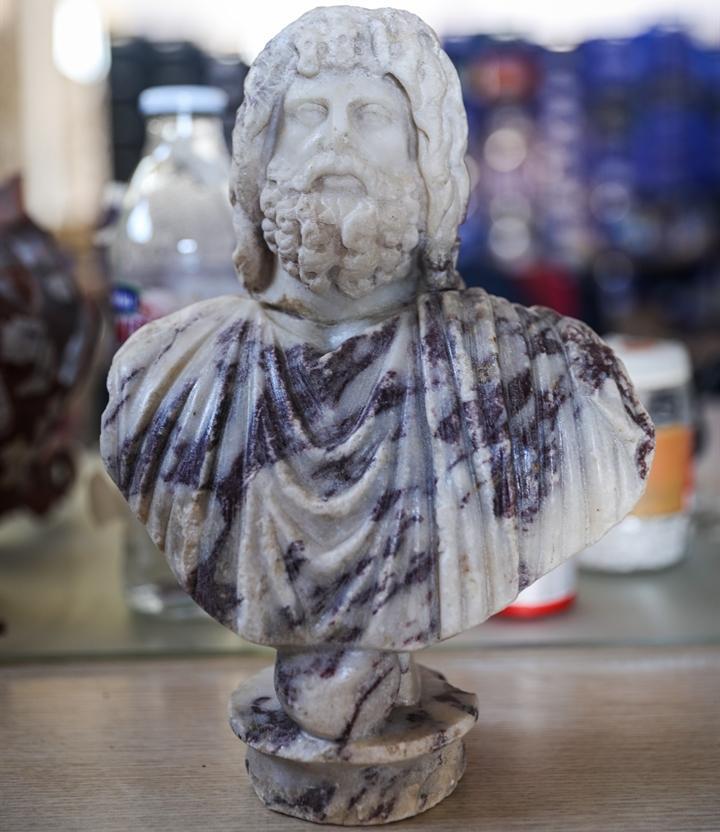Significant Roman-era artifacts found in Kibyra
BURDUR

Excavations that have been ongoing in the ancient city of Kibyra, which is located in the southern province of Burdur’s Gölhisar District, have unraveled the head of a marble bust of Serapis and a statue of Asclepius from the Roman period.
Popularly known as the “city of heroic warriors and fast horses,” the ancient city made it to the UNESCO World Heritage Tentative List in 2016.
The artifacts named Serapis and Asclepius that came to light under the excavation works headed by Şükrü Özüdoğru, associate professor at Burdur Mehmet Akif Ersoy University, will be exhibited in the Burdur Museum.
Earlier in 2019, the bust of Serapis was found, and recently, with the unraveling of the head of the bust that came to light during the removal of plants from the excavation site in a different part of the Roman Bath Complex this year, the statue is ready to glorify the shelves of a museum.
Officials stated that the restoration and conservation work of the marble bust, which was found in two pieces in different excavation seasons, was carried out by the experienced restorers of the excavation team. Its documentation, damage assessment, cleaning and consolidation were also carried out by the same team. It was also noted that the restoration and conservation work of the marble bust dating to the Roman Imperial Period has been completed while the scientific publication studies were still ongoing.
The excavations conducted on the southern slope of the Kaisarion (Emperor Cult Temple) have unearthed an approximately 38-centimeter-tall statue of Asclepius.
 That statue is depicted as a very finely crafted and dressed god with long curly hair and a beard. It is leaning on a snake-wrapped baton and is holding an egg. Officials stated that this statue was important both for the history of archeology and for the health-related cults of Kibyra since the depictions of Asclepius while holding an egg in this way were very few.
That statue is depicted as a very finely crafted and dressed god with long curly hair and a beard. It is leaning on a snake-wrapped baton and is holding an egg. Officials stated that this statue was important both for the history of archeology and for the health-related cults of Kibyra since the depictions of Asclepius while holding an egg in this way were very few.
This statue of Asclepius was found in the fire layer of the ancient city and is in seven pieces, having endured the negative impact of the fire layer and the environmental conditions during the time it had remained under the ground. It was noted that the general condition of the statue, all parts of which were found, was intact, and the restoration, conservation and scientific publication studies of the work have been ongoing.
This artifact, which dates back to the Roman Imperial Period, will be integrated and exhibited in its original form after conservation work.
Serapis
Serapis is a god of Egyptian origin, who wears a chiton (a loose, woolen tunic) and himation (rectangular cloak made of linen or wool) and carries a basket on his head, often signified as the god of sky and the god of light.
After Alexander the Great, it became one of the greatest gods of the Ptolemaios, crossing the country borders where he was worshiped all over the world. Later, it was identified with Zeus, Asklepios, Dionysus, Hades and Poseidon, the leading gods of the Greek world. The worship of this God continued in Anatolia for many years.
Asclepius
Asclepius, known as the god of medicine and health in the Greek world, is the son of Apollo, who also served as a healing god besides his many duties. Asclepius, who has many mythological stories about his birth, was raised by Kheiron, who was half horse and half human, and learned all the subtleties of god medicine from this horse man, according to mythology.
















